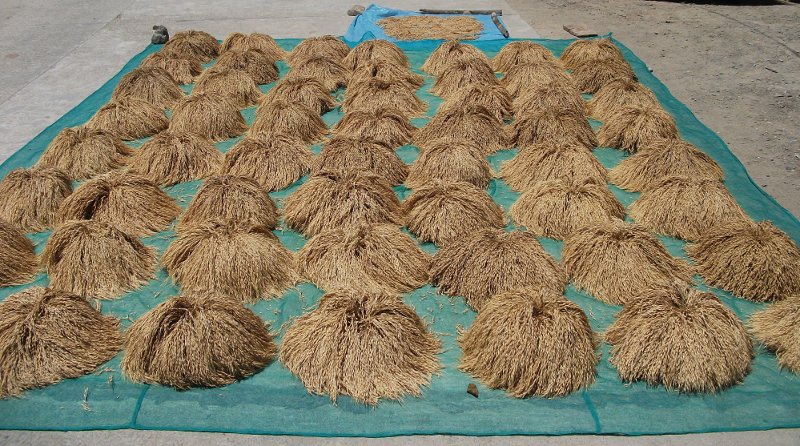Filipino Health: Check The Purity of Your Rice
I just came from a vacation in Nueva Ecija and met a wholesale palay trader. He was encouraging me to get into the rice trading business so I got an entire list of rice species palay and corresponding prices. Then it struck me, as a health conscious father and healer, that the retail rice in Manila was corrupt, chemicalized, blended, unpure. A big issue was the purity of your rice… and we city slickers are just too ignorant to have ever questioned the Filipino staple diet you eat 3x a day… rice is UN-pure, UN-clean and most probably UN-healthy.
The ignorant city slicker that I am, I was looking for labels in the rice fields like dinorado, laon, ifugao, but I found none. They had funny numbers and names instead:
160 – long grain
134 – long grain
214 – long grain
Angelica long grain
82 – long grain
222 – long grain
c10 – short grain
super rice – short grain
super tila – short grain
And many more.
The process is that farmers store these palay in sacks in their homes. When they need money, they sell the palay. The palay buyers buy the palay and sell them to the wholesale buyers who send it to the rice mills with machines to turn the palay into rice… bigas. And this is where they BLEND… combine, different rice sources to come up with some rice name they sell retail like LAON, in the retail stores in Manila.
A big secret my rice trader friend told me was that the packers SPRAY the rice with some chemical fragrance so that you buying and smelling the rice are FOOLED into thinking… yeah this is good… NOT… it’s fake!
Another trick the rice packers do is to increase their profit margins by blending in inferior rice such as NFA rice. NFA rice in this context is given a bad name being thought of as cheap and inferior, mixed with more expensive rice and the packers sell the rice at higher margins by reducing their cost.
So this is the thing dear fellow urban dwellers. You and I have been had. Every time you go to a rice retailer or even buy those half sacks of whatever brand name they use… it’s just a brand name… a blend of different rice grains plus added artificial odors. Your urban retail rice is NOT PURE.
My new rice wholesaler friend gave me 4 kilos of white long grain rice with binhi designation 160. I had it cooked for my children’s lunch. I had forgotten about it as I visited them at lunch. These 3 children 9, 7 and 6 were all raving about how DELICIOUS the new rice was. “It’s sooooo goooodddd… the rice is delicious by itself without any ulam (meat) or sauce.” I was totally surprised as these comments were UNSOLICITED. I never asked for them. The kids just chimed in and were just plain HAPPY!
Rice is a staple food and has been for many hundreds of years. But it has been getting a bad reputation in paleo diet circles, but rice is the least harmful of all the grains. But now this, this new realization, that it’s not that rice is bad, rice is good… if it is PURE. Rice is good if there were no chemicals in it, if it was newly shelled / milled / husk removed. The very definition of organic.
Something like the Tinawon traditional white rice variety of the Banaue and surrounding Ifugao rice terraces, is always organic, pesticide free, organic water, organic soil… but expensive, harvests only once per year and shoots come only at 5 per stalk, manually planted and harvested… all leading to… expensive… 150 per kilo! The Ifugao usually keep Tinawon for themselves. It’s highly nutritious and heavy and filling. You will feel it when you eat it.

I am in the process of purifying our rice supplies. Last month I got lots of traditional Banaue rice, red rice, just yesterday I brought home 10 kilos of Tinawon. But this expensive Banaue rice is unsustainable. I will have to make arrangements with my contacts in Nueva Ecija and Quezon for cheaper but PURE rice.
If you want the best of health for your family, you need to go out now and investigate how you can get PURE RICE. This is your Filipino diet staple… your health depends on it. Now you know why the Ifugao do not usually sell their traditional rice. Now I know.